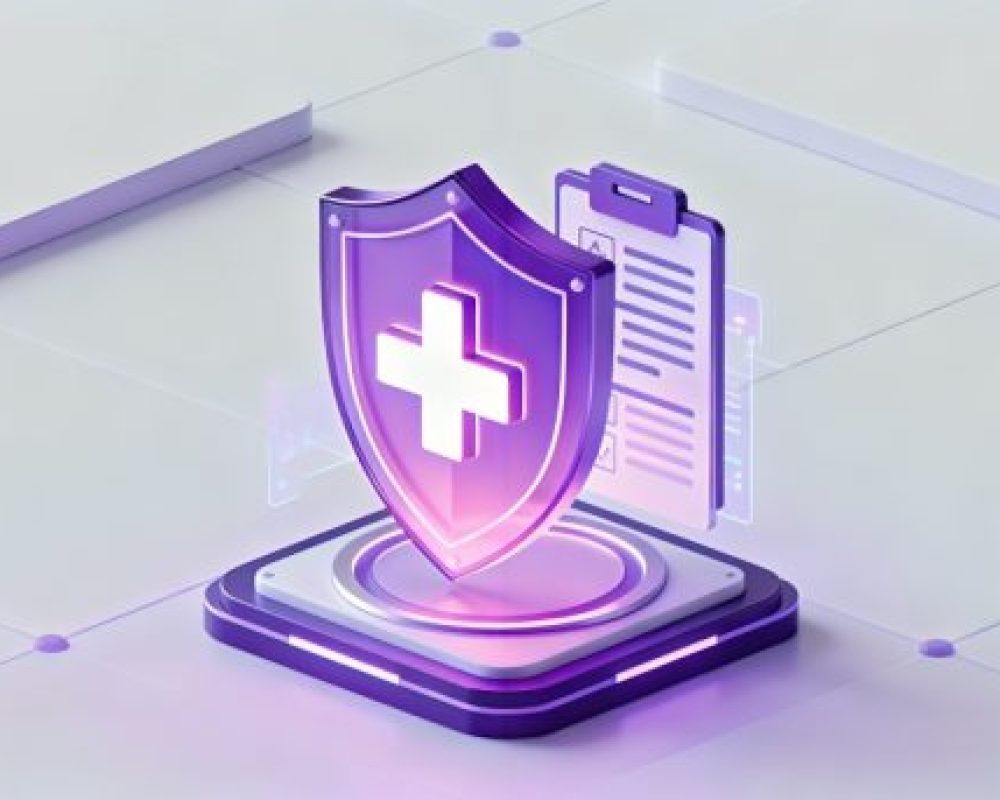ADHICS Compliance UAE and Its Role in UAE Healthcare Cybersecurity
As the UAE’s healthcare sector embraces digital transformation, the amount of sensitive patient data being stored, transmitted, and shared has skyrocketed. From electronic health records (EHRs) and telemedicine platforms to AI-driven diagnostics, the healthcare landscape now operates on vast streams of personal and medical information. Protecting that data is no longer optional — it is both a moral duty and a legal requirement.
The Abu Dhabi Healthcare Information and Cyber Security Standard (ADHICS), introduced by the Department of Health (DoH), establishes a comprehensive framework for cybersecurity and data protection across the healthcare ecosystem. ADHICS defines the security standards and operational requirements that every healthcare organization in Abu Dhabi must meet to protect electronic health information (eHI) and personally identifiable information (PII).
By 2025, ADHICS compliance will become a defining benchmark for healthcare providers that prioritize patient trust, data integrity, and operational resilience in an increasingly digital world.
What Is ADHICS Compliance and Why It Matters
ADHICS provides the foundational guidelines that ensure all healthcare entities follow a unified approach to data protection and cybersecurity. It applies to:
-
Hospitals and medical centers
-
Laboratories and diagnostic facilities
-
Insurance companies and third-party administrators
-
Healthcare IT vendors and data processors
Its objectives are far-reaching, ensuring not only the confidentiality of patient information but also the continuity and integrity of healthcare operations.
Key ADHICS Objectives include:
-
Safeguarding patient confidentiality and preventing unauthorized data use.
-
Maintaining accuracy and integrity of health records.
-
Ensuring uninterrupted healthcare services through robust business continuity.
-
Supporting interoperability between secure digital systems.
-
Elevating cybersecurity maturity across the UAE’s healthcare sector.
In essence, ADHICS helps healthcare organizations fortify their digital infrastructure, protect against cyber threats, and maintain compliance with national and international data protection laws.
The Core Domains of ADHICS Compliance
ADHICS includes over 180 detailed controls organized into several critical cybersecurity and privacy domains. Each domain addresses a specific dimension of healthcare data protection, ensuring a holistic security posture.
-
Information Security Governance: Defines leadership responsibilities, policies, and accountability structures.
-
Data Classification and Handling: Establishes labeling and security protocols for different types of patient data.
-
Access Control and Identity Management: Limits data access to authorized personnel through role-based permissions.
-
Network Security and Encryption: Ensures secure transmission and storage of data across internal networks and cloud systems.
-
Incident Response and Recovery: Provides protocols for breach detection, response, and notification.
-
Physical Security and Device Control: Protects IT infrastructure, medical devices, and administrative systems from physical tampering or misuse.
Together, these domains ensure that healthcare organizations in Abu Dhabi maintain end-to-end control over their cybersecurity posture.
Step-by-Step Roadmap to Achieve ADHICS Compliance UAE in 2025
Step 1: Conduct an ADHICS Gap Assessment
Begin with a detailed gap analysis comparing your organization’s current cybersecurity practices against ADHICS control requirements. This helps identify deficiencies, missing documentation, and potential compliance risks.
Step 2: Build a Data Governance Framework
Establish a clear structure for data protection responsibilities. Appoint a Data Protection Officer (DPO) and define the roles of cybersecurity leads to ensure accountability across departments.
Step 3: Implement Technical and Administrative Controls
Adopt the necessary security controls outlined by ADHICS, including:
-
End-to-end encryption of data in transit and at rest.
-
Multi-factor authentication (MFA) for all critical systems.
-
Role-based access control (RBAC) for staff.
-
Regular penetration testing and vulnerability scans.
-
Network segmentation for medical devices and operational systems.
Step 4: Staff Awareness and Training
Empower healthcare and IT staff through cybersecurity training. Ensure they understand how to recognize phishing attacks, handle patient data safely, and follow privacy-by-design principles.
Step 5: Continuous Monitoring and Reporting
Establish mechanisms for continuous monitoring of security events and regular internal audits. Ensure all incidents are logged and reported within the timeframes required by ADHICS.
How ADHICS Aligns with UAE PDPL and International Standards
ADHICS does not operate in isolation. It aligns closely with the UAE Personal Data Protection Law (PDPL), the National Electronic Security Authority (NESA) Information Assurance Standards, and international frameworks such as HIPAA (Health Insurance Portability and Accountability Act) and ISO/IEC 27799.
This harmonization ensures that healthcare providers can maintain compliance both locally and globally. It simplifies cross-border collaboration for medical research, telehealth services, and partnerships with international organizations — all while maintaining stringent data protection measures.
Common Compliance Challenges
While ADHICS provides a comprehensive roadmap, many organizations face obstacles during implementation. Common challenges include:
-
Limited internal expertise in interpreting ADHICS control requirements.
-
Outdated legacy systems that cannot support modern encryption or MFA.
-
Incomplete documentation and audit trails.
-
Lack of structured incident reporting and breach management procedures.
Partnering with specialized consultants such as Processa Inc. can accelerate compliance by offering expert audits, documentation templates, and hands-on support in bridging these gaps.
Benefits of ADHICS Compliance in 2025
-
Patient Trust and Reputation
Compliance reinforces your commitment to ethical data handling and strengthens patient confidence in your healthcare services. -
Legal and Regulatory Assurance
Avoid costly penalties, reputational harm, and regulatory disruptions by staying compliant with Abu Dhabi’s healthcare mandates. -
Improved Operational Efficiency
Standardized controls reduce security incidents, simplify audits, and enhance productivity across healthcare IT systems. -
Competitive Advantage
Compliance can serve as a differentiator, making your organization a preferred partner for both government and private healthcare projects. -
Enhanced AI Readiness
With secure and structured data governance, ADHICS Compliance UAE lays the foundation for responsible AI and data-driven healthcare innovation.
Conclusion
ADHICS compliance is more than just a regulatory requirement — it’s a hallmark of trust and excellence in digital healthcare. In 2025, organizations that proactively align with ADHICS will not only protect patient data but also lead the charge in ethical, AI-ready healthcare transformation.
By partnering with Processa Inc.,Cybersecurity & Compliance Consultancy in UAE
healthcare providers gain end-to-end guidance — from gap analysis and control implementation to documentation and pre-audit validation — ensuring complete compliance and a secure future for patient data in the UAE.
Frequently Asked Questions (FAQs)
1. What is ADHICS compliance in the UAE?
ADHICS is the Abu Dhabi Healthcare Information and Cyber Security Standard that defines data protection and cybersecurity requirements for healthcare entities.
2. Who must comply with ADHICS?
All healthcare providers, insurers, and technology vendors handling patient data in Abu Dhabi are required to comply.
3. How does ADHICS relate to UAE’s PDPL law?
ADHICS complements PDPL by providing sector-specific technical controls and data governance standards for healthcare data.
4. What are the penalties for non-compliance?
Non-compliance can lead to regulatory sanctions, reputational damage, and suspension of digital healthcare operations.
5. How can Processa Inc. assist with ADHICS compliance?
Processa offers end-to-end compliance solutions including gap analysis, documentation, training, and pre-audit readiness checks.





